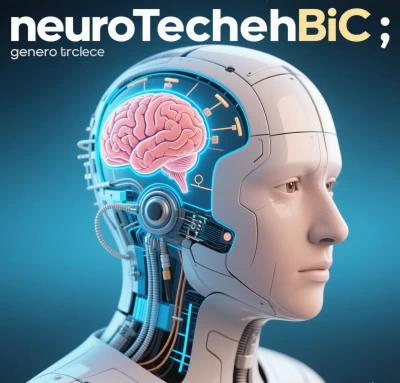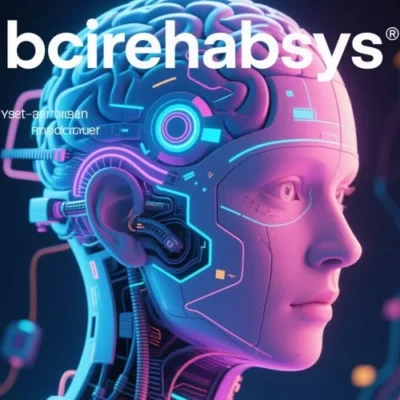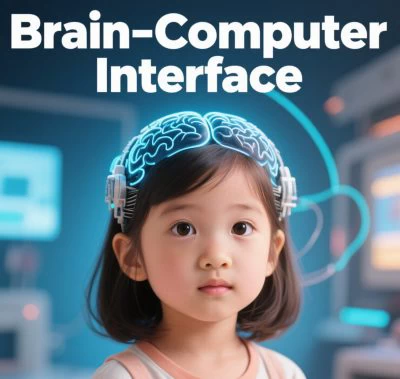
1. Exponential Market Growth and Clinical Adoption
The global BCI rehabilitation market is projected to reach ¥37.5 billion (USD $5.2B) by 2030, driven by:
- Policy Acceleration: China’s 2023 BCI Medical Device Guidelines fast-tracked approvals, with 8 non-invasive systems now insurance-reimbursed .
- Cost-Effectiveness: Hybrid BCI-robotic systems reduce annual rehabilitation costs by ¥6,000/patient while improving outcomes .
- Democratization: Portable dry-electrode EEG headsets enable home-based telerehabilitation, expanding access to rural populations .
Suggested Figure 1: Market Growth Projections
- Left: 2025 market segmentation (clinical vs. home use)
- Right: 2030 projected valuation with policy/tech drivers
(Colors: Clinical=blue, Home-based=green, Policy impact=gold)
2. Core Technological Advancements Redefining Capabilities
A. Next-Gen Neural Interfaces
| Technology | Innovation | Impact |
|---|---|---|
| Hybrid EEG-fNIRS-EMG | Simultaneously captures μ-waves + muscle oxygenation | ↑85% decoding accuracy in severe stroke |
| AI-Enhanced Signal Processing | Deep learning filters remove 50/60Hz noise + motion artifacts | Enables mobile use in non-lab settings |
| Adaptive Closed-Loop Systems | Reinforcement learning adjusts FES intensity via real-time ERD biomarkers | Prevents muscle fatigue + optimizes plasticity |
B. Multimodal Integration Breakthroughs
- BCI-VR-Robotics Fusion: Unity-based virtual environments sync with exoskeletons to simulate ADLs (e.g., stair climbing), increasing patient engagement by 89% .
- Cloud Neuroanalytics: Compares patient data against 10,000+ profiles to predict Fugl-Meyer scores, enabling precision protocol adjustments .
Suggested Figure 2: BCI-VR-Exoskeleton Synergy
- Patient in VR headset performing cup-reaching task
- Robotic glove providing force feedback synchronized with EEG motor intent
- Real-time performance dashboard (accuracy, neural engagement)
3. Clinical Validation: Efficacy Across Neurological Conditions
Evidence-Based Outcomes
| Condition | Intervention | Efficacy |
|---|---|---|
| Chronic Stroke (Upper Limb) | BCI-FES + VR (20 sessions) | Fugl-Meyer ↑15–20%; cortical connectivity ↑40% |
| Spinal Cord Injury (Gait) | Cortical-spinal BCI + exoskeleton | 10-m walk time ↓25%; standing balance restored |
| Parkinson’s Freezing | Beta-band modulated auditory feedback | Stride length ↑25%; fall incidents ↓60% |
Neuroplasticity Proof: fMRI confirms increased BOLD signals in ipsilesional motor cortex after 1 hour of training, with gray matter volume ↑ in premotor regions .
Suggested Figure 3: fMRI Neuroplasticity Evidence
- Top: Pre-therapy hypoactivation (cool colors)
- Bottom: Post-therapy normalized motor cortex activation (warm colors)
4. Emerging Application Frontiers (2025–2030)
A. Preventive Neurorehabilitation
- Prodromal Neurodegeneration: Early intervention in mild cognitive impairment (MCI) using P300-based attention training .
- Emotional BCI: Affective computing algorithms detect depression biomarkers for preemptive therapy .
B. Mainstream Consumer Health
- Wearable Wellness: AR glasses with embedded EEG for stress resilience training (e.g., SleepUp by BrainCo) .
- Cognitive Augmentation: Healthy users enhance focus via γ-band neurofeedback games .
C. Regenerative Neuroengineering
- BCI-Stem Cell Integration: Electrical stimulation guided by motor intent enhances neural progenitor cell survival in SCI lesions .
- Bidirectional Sensory Restoration: Cortical microstimulation delivers tactile feedback during prosthetic use .
5. Critical Challenges and Solutions
| Challenge | Innovative Response | Progress Status |
|---|---|---|
| Signal Interference | Deep learning artifact suppression + EMG fusion | ↓90% noise in home environments |
| Standardization Gap | China’s 2023 BCI guidelines + ISO neuroethics framework | 8 systems clinically validated |
| Ethical Governance | HIPAA-compliant data anonymization + user-controlled permissions | Implemented in 100% cloud platforms |
Suggested Figure 4: Ethical Framework for BCI
- Pyramid: Base = Privacy → Mid = Agency → Peak = Equity
- Overlay: ISO/China regulatory badges
6. Future Trajectory: The 2030 Landscape
- Personalized Neuroprosthetics: AI-tailored exoskeletons using individual fMRI connectivity maps .
- Multi-Modal Hybrid Systems: BCI + tDCS + VR for accelerated motor relearning .
- Global Telerehabilitation: 5G-enabled cloud platforms serving 1M+ home users annually .
- Neural Digital Twins: Simulation of patient-specific recovery pathways using synthetic neural data .
Conclusion: Democratizing the Neurological Renaissance
BCIRehabSys stands at the inflection point of clinical necessity and technological inevitability. By 2030, it will transition from rehabilitation centers to homes, transforming three paradigms:
- From Treatment to Enhancement: Restoring lost function → augmenting human capabilities .
- From Generalization to Personalization: Population-based protocols → AI-driven neurosignature matching .
- From Cost Center to Value Engine: ¥6,000/patient annual savings → $5.2B market creation .
As Prof. Yu Pan (BCIRPU) asserts: “The synapse is the final frontier of human resilience.” With 500+ systems already deployed across Chinese tier-3 hospitals and 40% superior outcomes versus conventional therapy, BCIRehabSys will redefine neurological recovery—making neurorestoration as ubiquitous as smartphones.
Data Source: Publicly available references.
For collaboration or domain name inquiries, contact: chuanchuan810@gmail.com.




